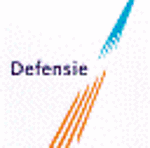
Since this vehicle is a desert vehicle and is already a light color, the pigment weathering was focused on the darker elements and giving them a dusty look vs. the entire vehicle where it wouldn't be visible in the end. I used Mig's Gulf War Sand and combined it with tap water with a drop of dish washing liquid soap to break the surface tension. The wet mix was applied to the entire lower hull, running gear, all the spare track runs, and various other items/areas that needed a dusty appearance. This was then allowed to air dry over the course of about an hour...this is another of those "hurry up and wait" stages, so I often use these to begin cleaning up the bench, sorting out the leftover parts, etc. to stay "busy" and not get in a hurry.

The Gulf War Sand application was now attacked and reduced by using a series of stiff bristled brushes and a combination of wet and dry Q-tips to adjust the look. I wear a dust mask during this phase to insure I don't get an overdose of inhaled fine particles and work in sections, avoiding putting too much stress on the tracks in particular. Once everything was in order, the tracks were permanently locked down with the desired sag by gluing them in place to the idler, return rollers, and road wheels.

The final step was to remove the blue tack from the driver's visor, the gunner's turret front port, and install the missing commander's cupola block. I very carefully applied a very small amount of black artist pastels to the inner surfaces of the muzzle brake and then dry-brushed some Afrika Braun to blend back any stray traces on the exterior.

This one will sit overnight and I'll give it a once-over to see if there are any other areas that need to be fine-tuned or adjusted, then it will be photo-booth time for the finished shots.
Total Session Time: 4.75 hours
Total Project Time: 71.50 hours













































